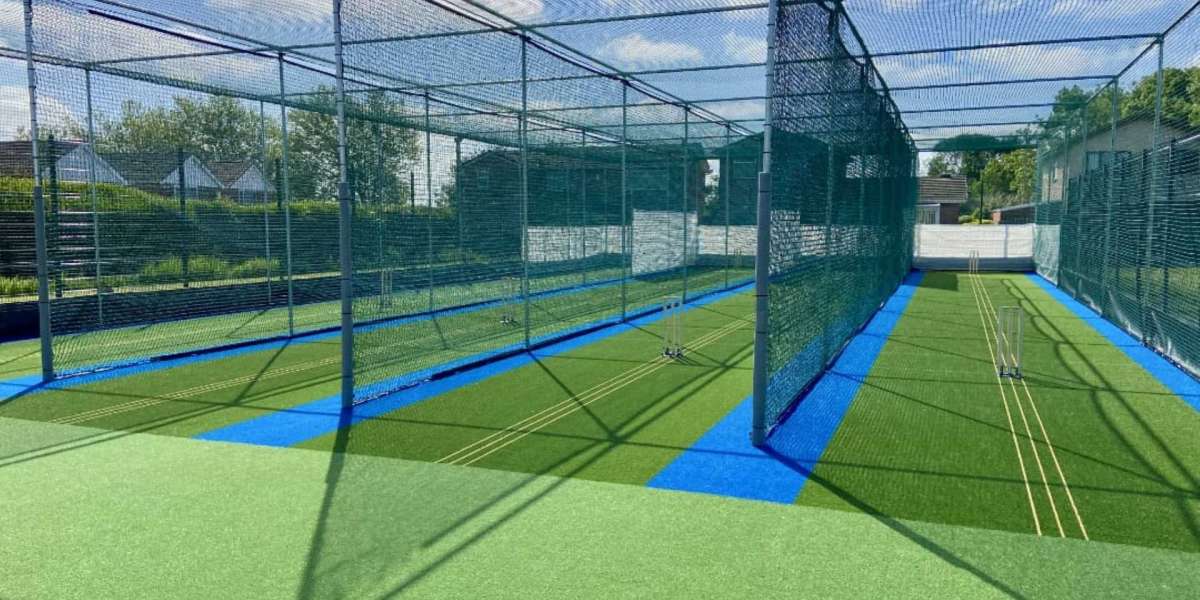No matter what sport you're playing, having the right sports net can elevate your experience—both in performance and safety. From backyard games to professional matches, nets serve more than just a visual or structural role. They contain, protect, train, and often determine whether you score or miss. However, not all nets are created equal. Each sport—and each environment—demands a specific type of netting.
In this article, we’ll break down what it really means to choose the right sports net for your game. Whether you’re a coach, player, parent, or facility owner, understanding your options will help you get the most value out of your equipment.
1. What Is a Sports Net, Really?
At its simplest, a sports net is a barrier or enclosure made of mesh material, designed to interact with a sport-specific object—whether it’s a ball, puck, shuttlecock, or something else. Depending on the game, a net might:
Serve as a goal target (e.g., in soccer or hockey),
Act as a barrier (e.g., golf or baseball),
Be a central game element (like in volleyball or badminton),
Or assist in training and repetition (pitching, rebounding, or hitting).
The right sports net depends on how it's being used, the intensity of play, and the environment it’s set up in.
2. Factors That Define the Right Sports Net
a) Sport Type
This is the most obvious place to start. Every sport has different net requirements:
Soccer, hockey, lacrosse – Use nets to catch fast-moving balls or pucks at high speed.
Volleyball, tennis, badminton – Nets define the field of play and require precision height and tension.
Baseball, cricket, golf – Practice nets or enclosures are used to contain high-speed impacts.
Basketball – The net is small, but still impacts play feel and scoring visibility.
Understanding the role of the net in the sport is key to making the right selection.
b) Location: Indoor or Outdoor
Indoor nets are usually protected from weather but may need to handle more frequent contact. Outdoor nets must deal with:
UV exposure
Rain, wind, and dust
Temperature changes
Outdoor sports nets must be weather-resistant, often made of polyethylene or treated nylon.
c) Purpose: Game vs. Practice
Game nets: Often conform to official rules and dimensions.
Training nets: Focus on functionality and safety.
Barrier or backstop nets: Help prevent equipment from flying outside of designated areas.
Choose based on whether you’re preparing for competition, casual play, or practice.
3. Key Materials in Sports Netting
Understanding materials is essential for long-lasting performance.
Nylon
Extremely durable and flexible.
Great for high-impact sports.
Can absorb moisture unless treated.
Polyethylene
Water-resistant and lightweight.
Ideal for outdoor use, especially for barrier nets.
Polyester
Strong and UV-resistant.
Great for game nets where tension and appearance matter (e.g., volleyball, tennis).
Each material has trade-offs in price, strength, and durability. The right sports net balances these based on your specific needs.
4. Mesh Size and Twine Gauge: Why They Matter
Two technical but important specs in choosing nets:
Mesh Size
The size of the holes in the net.
Smaller mesh is needed for sports like golf, baseball, or cricket.
Larger mesh works fine for soccer, volleyball, and lacrosse.
Twine Gauge
The thickness of the net’s string.
Thicker twine (e.g., #42 or more) lasts longer and handles more force.
Thinner twine can be lighter and easier to handle for indoor or light training use.
For high-impact sports or outdoor settings, go with thicker twine and tighter mesh.
5. Common Types of Sports Nets
Let’s explore the most popular net types and what to look for:
Goal Nets
Used in soccer, hockey, handball, and lacrosse.
Must match regulation sizes.
Look for strong knots and weatherproof coatings for durability.
Barrier and Backstop Nets
Found in golf ranges, baseball fields, or multi-sport gyms.
Need tall coverage and small mesh to contain fast-flying objects.
Should be easy to hang and remove.
Training Nets
Rebounders, pitching nets, target nets.
Should be portable, stable, and absorb impact without tearing.
Useful for solo drills or team training sessions.
Divider Nets
Large curtain-like nets in gyms or sports centers.
Separate courts or fields during multi-use.
Often retractable or mobile.
Game Play Nets
Volleyball, tennis, and badminton.
Accuracy is key: height, length, and tightness must meet official standards.
6. Signs You’re Using the Wrong Net
If you’ve already got a net but suspect it’s not quite right, here are some red flags:
The net tears easily or sags too much.
Balls or objects escape through the mesh.
It doesn’t fit the frame or area correctly.
Weather damage shows up quickly.
Players complain about bounce-back or net response.
When any of these signs appear, it's time to reassess and invest in the right sports net for your situation.
7. Maintenance Tips for Long-Lasting Use
Once you have the right net, take care of it:
Store indoors when not in use, especially in off-season.
Inspect regularly for fraying, holes, or loose knots.
Clean with mild soap and water, especially for indoor nets used in dusty or sweaty environments.
Use UV protection spray for outdoor nets to extend their lifespan.
Proper care can add years to your net’s life and performance.
8. Where to Get the Right Sports Net
When shopping for a sports net:
Specialty retailers often provide sport-specific advice and custom sizing.
Online stores offer variety and reviews—just double-check measurements and materials.
Local sports shops can offer installation help and allow you to feel the product in person.
Look for warranties, bulk discounts, and customer service options for large purchases or custom setups.
Conclusion
Choosing the right sports net might not seem like a big deal—until you’re dealing with a ripped net, an escaped ball, or a frustrated athlete. With the right knowledge, you can confidently select a net that meets your needs, fits your space, and lasts through seasons of use. Whether you're aiming for goals, practicing your swing, or setting up a game-ready court, the right net makes all the difference






